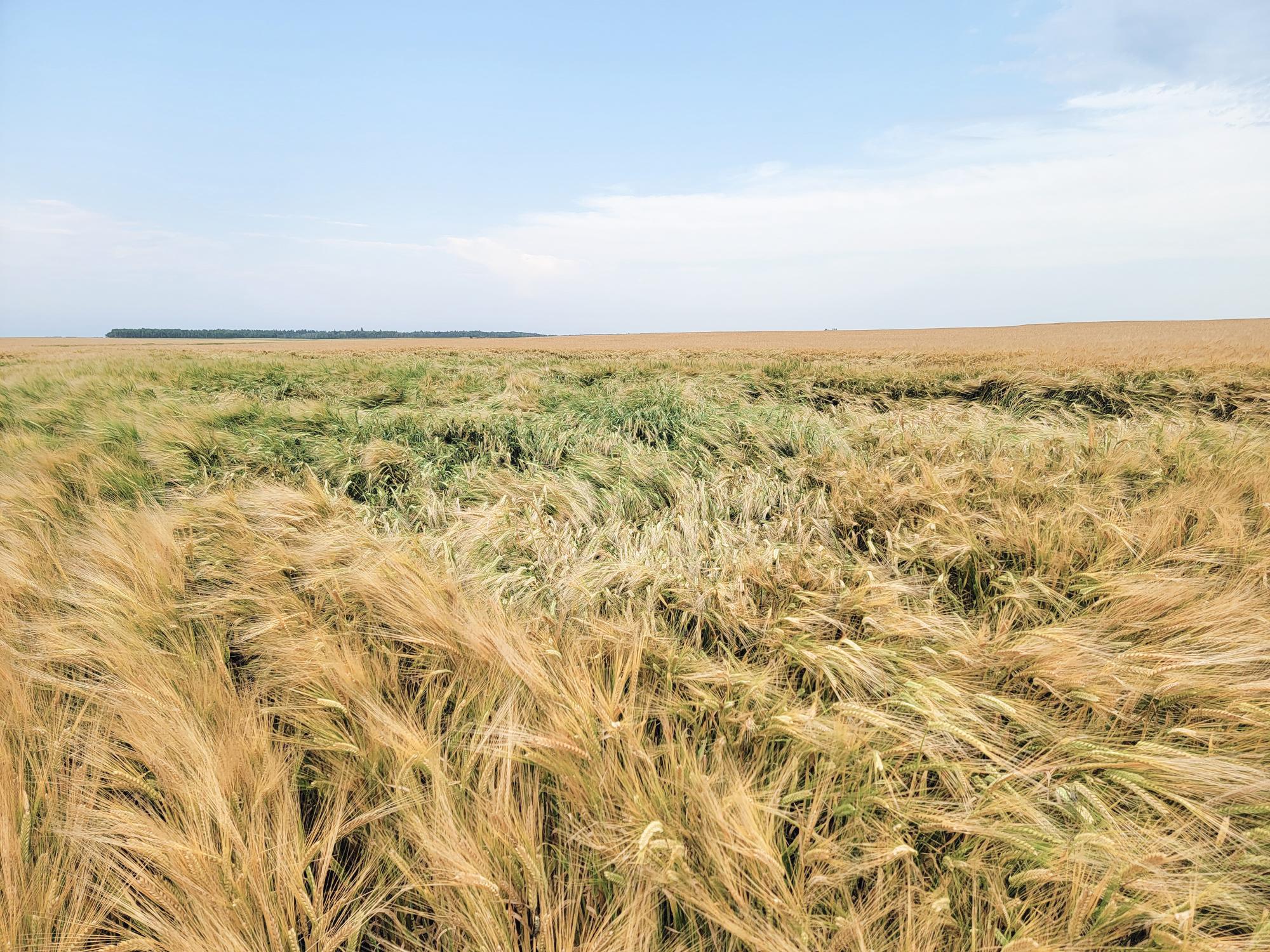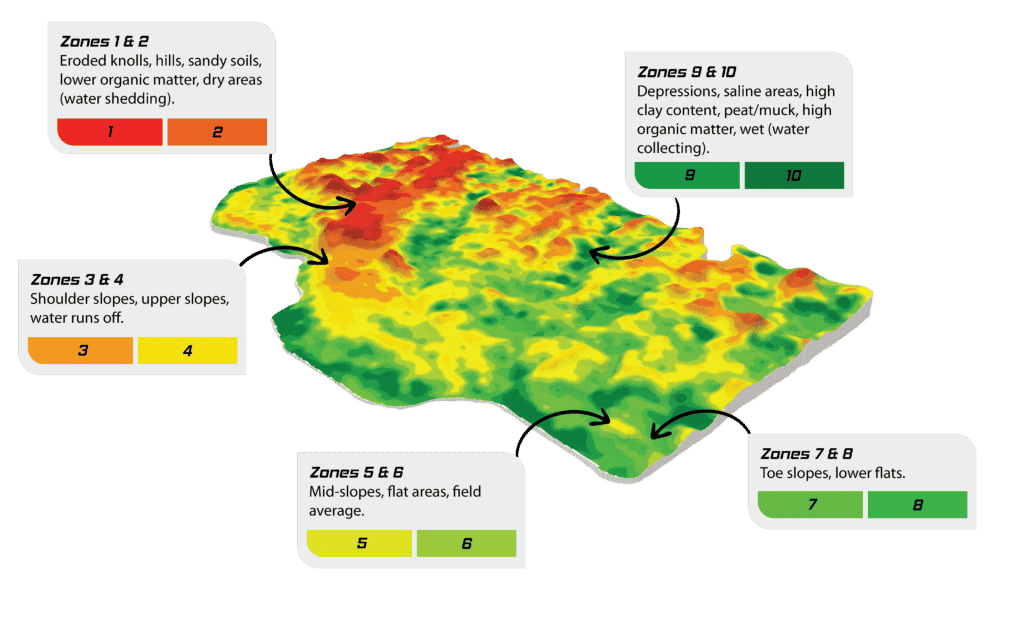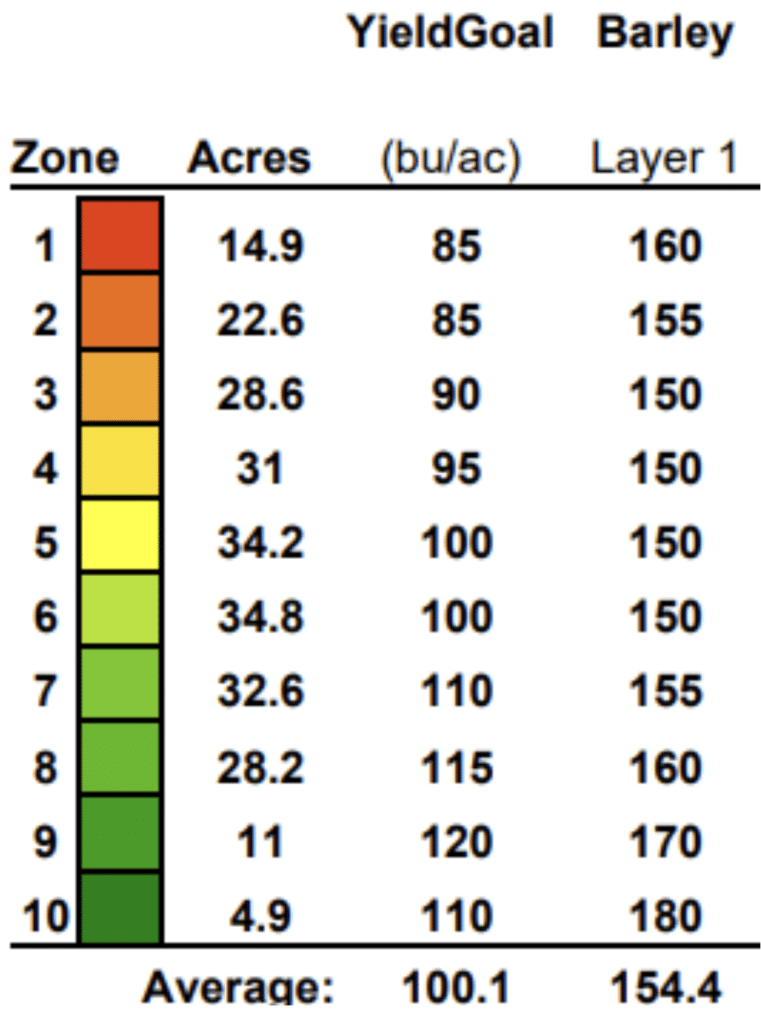How to Prevent Crop Lodging with VR Seed and Spray Applications

Crop lodging is a significant problem that leads to decreased yields, deterioration in seed quality, and decreased harvestability ease. Crop establishment that reaches target plants/sq ft and proper nitrogen management contribute to decreased lodging risk later in the growing season.

Figure 1. SWAT MAPS Management Zones Based on Topography
Early in the growing season it is common to see abundant moisture. Under wet soil conditions crops grow poorly developed shallow root systems. Areas of a field that are typically water holding with excess moisture are SWAT Zones 7-10. These are the areas that you will notice lodging later in the season because the crop has a poorly developed root system with excessive above ground growth. An established crop stand will use soil water more efficiently. SWAT MAPS can aid in establishing a good crop stand by using variable rate technology to apply seeding rates. When variable rate seed is practiced, seed rates are increased in higher mortality zones, which commonly includes Zones 7-10. Increasing seeding rates in these high mortality zones improves the crop plant stand. Variable rate seed applications aid to target plants/sq ft evenly throughout zones in a field. Reaching plant stand targets reduces excessive tillering that shallow root systems can not support later in the growing season.

Figure 2. Variable Rate Barley Seed
SWAT MAPS have proven that there is significant organic matter content variations throughout zones. The more organic matter in a soil the more nitrogen mineralization that will occur throughout the year. During the mapping and soil sampling process, SWAT MAPS identifies the areas that are lower and higher in organic matter. We know that excessive plant growth follows excessive nitrogen application which leads to lodging. We can variable rate nitrogen applications based on the knowledge of residual nitrogen levels left in the soil from the year prior while taking into consideration the amount that the soil will mineralize throughout differrent zones. Utilizing variable rate nitrogen applications will prevent lodging by ensuring the crop does not have excessive nitrogen in the soil and this practice will also aid in even crop maturity.
SWAT MAPS has the capability to also create variable rate spray applications. In the case of preventing lodging, we can variable rate apply plant growth regulators (PGRs). PGRs promote stronger stems to mitigate lodging. Fields that are a fit would include those with poor burned out crop zones due to drought or poor drowned out crop zones due to excessive moisture all season long.

SWAT MAPS can reduce lodging risk by providing the technology to variable rate seed, fertilizer and spray applications. These applications will enhance plant establishment to reach target plant populations throughout zones in a field. The applications will also provide nitrogen management throughout zones. SWAT MAPS will not only reduce lodging risks but will also even maturity for harvest profit and easeability.
Rachelle Murrison
Precision Agronomist









